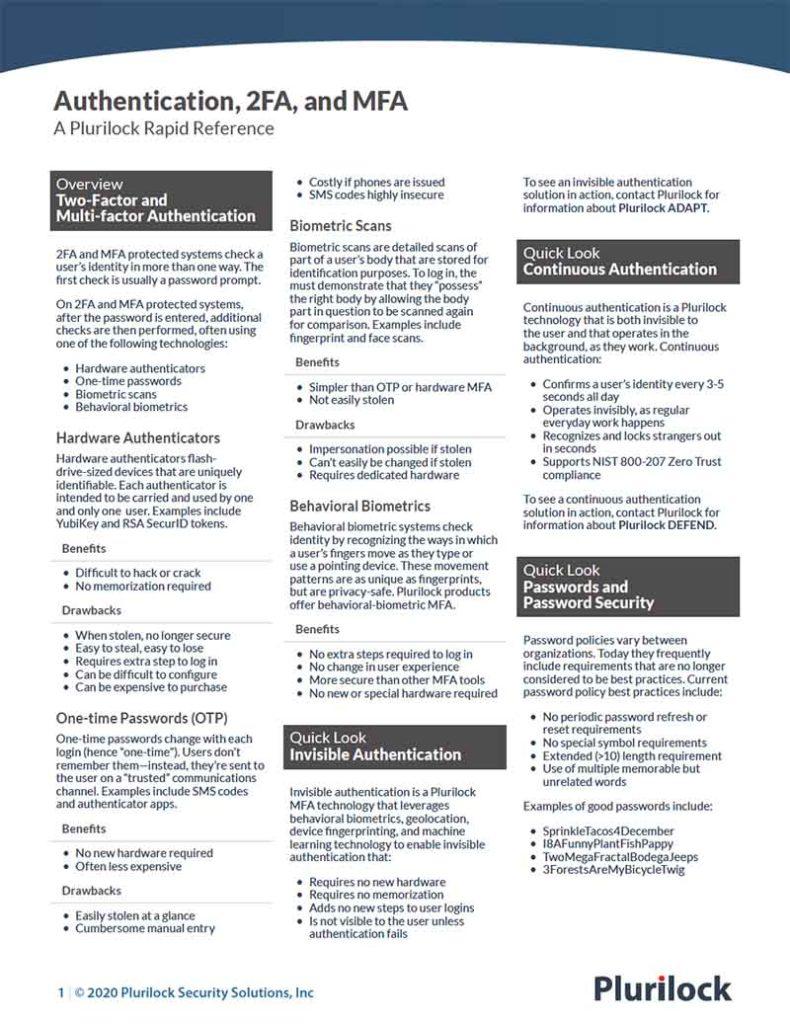Cybersecurity Reference > Glossary
Knowledge-Based Authentication (KBA)
Knowledge-based Authentication, or KBA, is a method of authentication in which a user proves his or her identity by providing information that only he or she should know.
Two types of KBA are widely used. Static KBA, also known as "shared secret" authentication, refers to authentication in which the question and answer are known in advance by both the system and the authenticating user. Passwords and "secret questions" are examples of static KBA.
Dynamic KBA refers to authentication in which the questions asked by the system are not known beforehand to the authenticating user. Dynamic KBA typically draws on one or many public or private databases of commercial or biographical data, and asks for a combination of personal historical facts (former residences, types of automobiles owned, former employers, and so on) that only the correct user is likely to know.
In practice, static KBA is considered to be a very weak form of authentication, as shared secrets are easily lost or stolen, particularly when always provided in the same way at every login. Dynamic KBA may or may not be somewhat stronger, with relative strength depending on the database(s) from which questions are drawn and their status as publicly available data or non-public private data.
Dynamic KBA, however, also represents both a considerable privacy intrusion and considerable privacy risk in most cases, paritcularly when "more secure" private data is requested from authenticating users.

2FA/MFA Rapid Reference
Authentication at a glance
Download the 2FA/MFA Rapid Reference now:
- 2FA and MFA basics and common solutions
- The benefits and drawbacks of each
- Glossary of authentication terms
2FA/MFA Rapid Reference
- 2FA and MFA basics and common solutions
- The benefits and drawbacks of each
- Glossary of authentication terms








